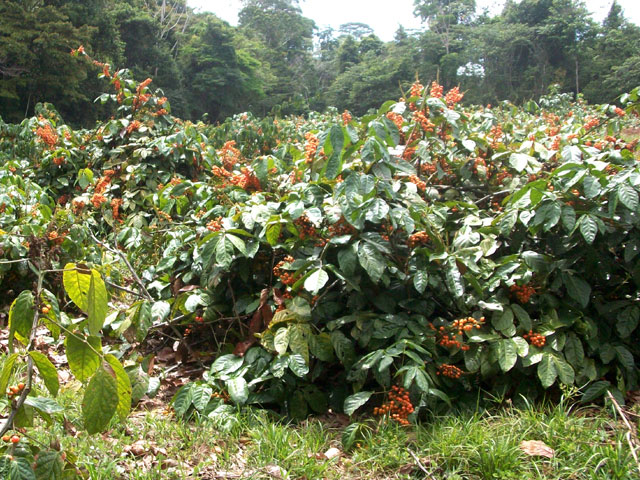Improving Plants
Today the topic is about improving plants, for understand it better we need to understand how happens the reproduction.
Guaraná is monoecious, it means that the plant have
separate male and the female flower on the same plant. So a cross
pollination happens in those plants, by insects and wind. (tropical.theferns,
n.d.)
(Cristiane Krug,
2016) Those plants have
strategies to prevent self-pollination, the pistil and stamen maturing at
different times, so it can't reproduce by itself. (Britannica, n.d.)
To be a self-pollinated specie
the plant need to have the male and the female part in the same flower in
the same plant, then the flower can reproduce by itself without any
intervention, it can even occur when the flower still closed, in cross
pollination the flower is lacking the male or the female part and need
intervention from outside factors, it only occurs when the flower is open,
normally the flowers are attractive with colourful colours and attractive
smell for the insects.
The picture
bellow shows the different kind of pollination that I was discussing in a
clearly and illustrated.
 http://byjus.com/biology/difference-between-cross-pollination-and-self-pollination/
http://byjus.com/biology/difference-between-cross-pollination-and-self-pollination/
Most
of the cross pollinated plant can become a transgenic plant, this genetic
transformation can have some benefits as increase resistance of species to
pathogens and parasites, increase tolerance to environmental variables and
also to add some vitamins or make some modifications at the plants as fruits
without seeds. (Fao, n.d.) But on the other hand those
genetic plants can reduce the genetic diversity, and once the genes of a
transgenic plant have contact with the natural plant, so all those plants will
have this transgenic material, what changes the natural genetics of the
plants. (URBAN, 2010)
So still a doubt about transgenic plants and I think more researches need to be
done to be sure that it is a safe way for the plants and for us.
 http://lotrminecraftmod.wikia.com/wiki/File:Guarana_bush.jpg
http://lotrminecraftmod.wikia.com/wiki/File:Guarana_bush.jpg
For guaraná
there is a breeding program, which the aim to see if guaraná clones can be
productive and divergent and used in a cross-breeding program to obtain hybrids
with high heterotic value and materials for vegetative propagation, with
uniform vegetative development for use in commercial plantations. Crossbreeding
was utilised in this experiment. The genetic divergence of the clones
currently in use in the guaraná breeding program of the Embrapa-Agroforestry
Research Center of the Western Amazon is not large. The results for this experiment were: The
formation of segregating populations, from biparental or multiple crosses,
among the most productive clones of each group, increases the probability of
emergence of higher hybrid combination, the genetic divergence of the clones
currently in use in the guaraná breeding program of the Embrapa-Agroforestry
Research Center of the Western Amazon is not large and genetically closest
clones can be used in the formation of a population with uniform vegetative
development for use in commercial plantations. (Firmino José do Nascimento
Filho, 2001)
Bibliography
Britannica, K. (n.d.). http://kids.britannica.com. Retrieved septemeber
2017, from
http://kids.britannica.com/students/article/flower/274354/200877-toc
Cristiane
Krug, M. V. (2016, March). Retrieved september 2017, from
https://hal.archives-ouvertes.fr/hal-01284430/document
Fao.
(n.d.). http://www.fao.org. Retrieved september 2017, from
http://www.fao.org/docrep/006/y4955e/y4955e04.htm
Firmino José do Nascimento Filho, A. L. (2001). Divergência
genética entre clones de guaranazeiro.
tropical.theferns.
(n.d.). http://tropical.theferns.info. Retrieved september 2017, from
http://tropical.theferns.info/viewtropical.php?id=Paullinia+cupana
URBAN, S.
(2010, august). http://www.organicauthority.com. Retrieved september 2017,
from
http://www.organicauthority.com/foodie-buzz/eight-reasons-gmos-are-bad-for-you.html
Comments
Post a Comment